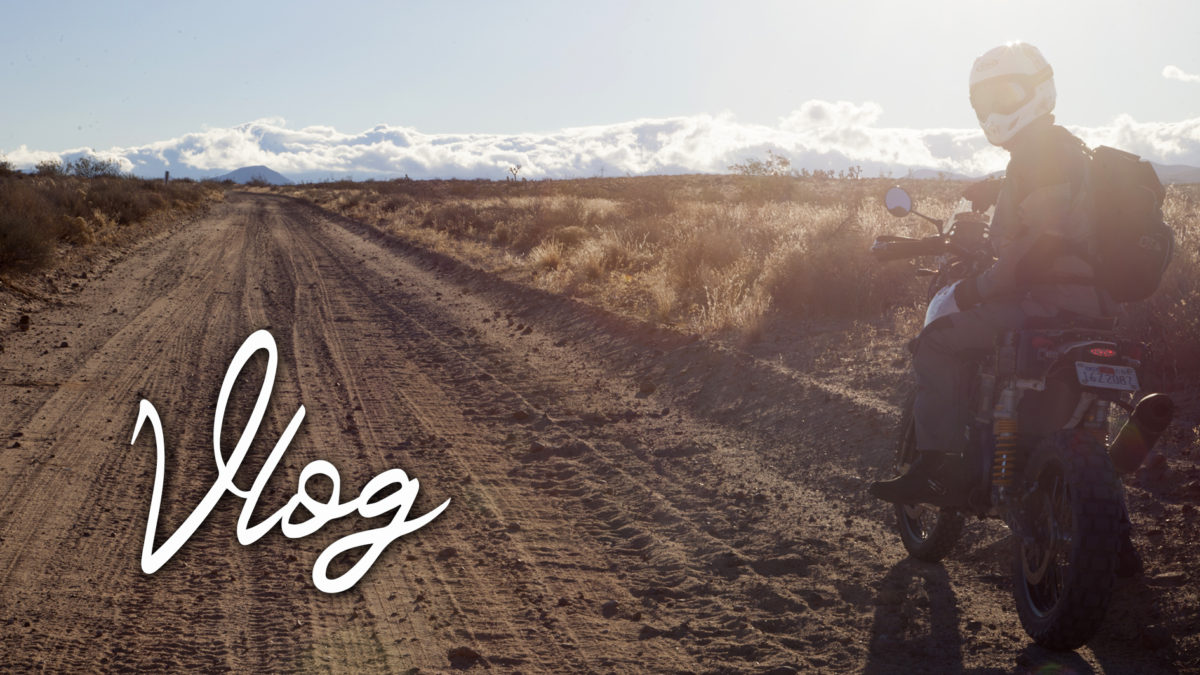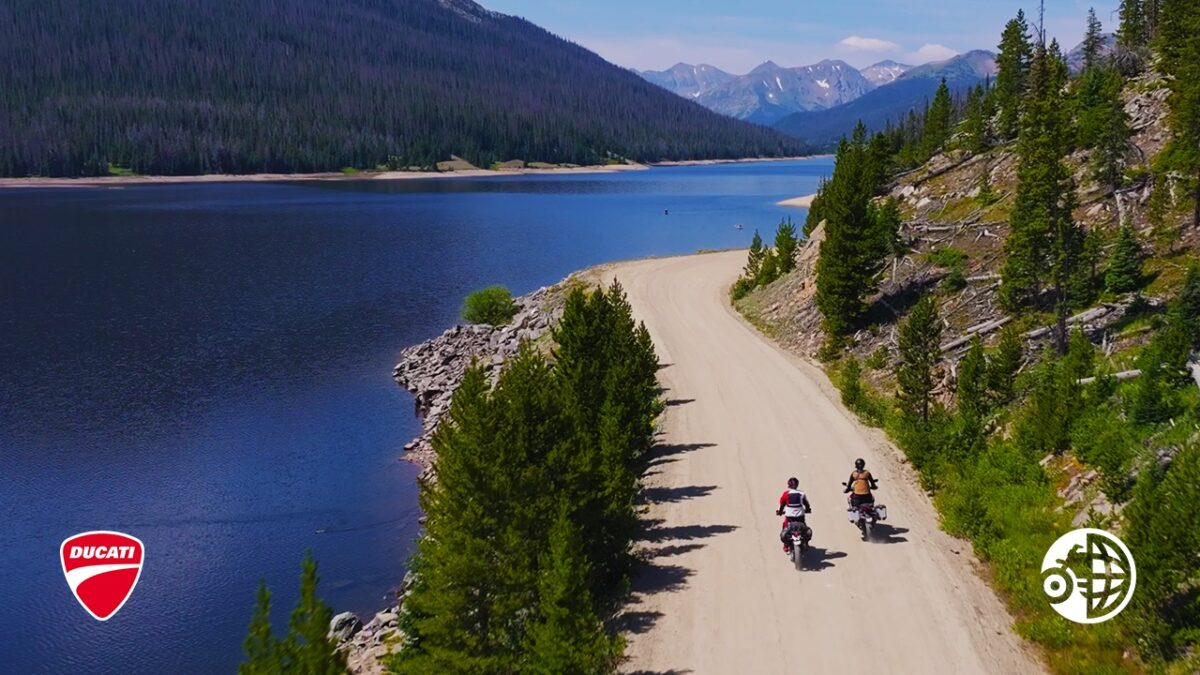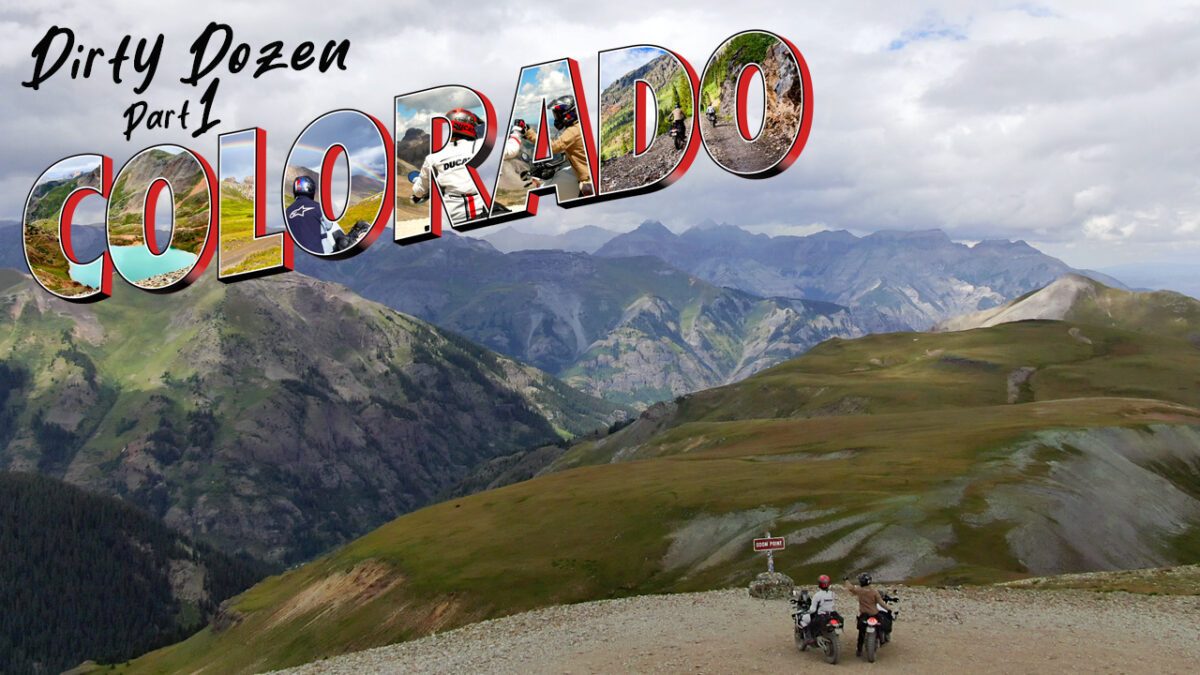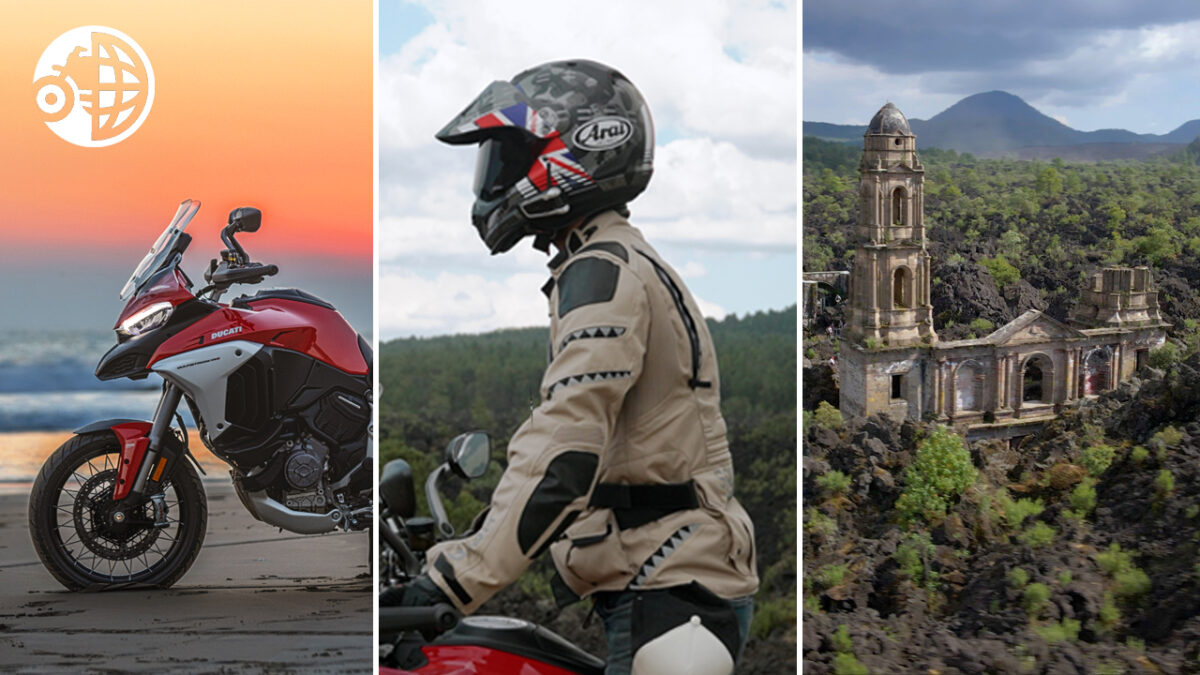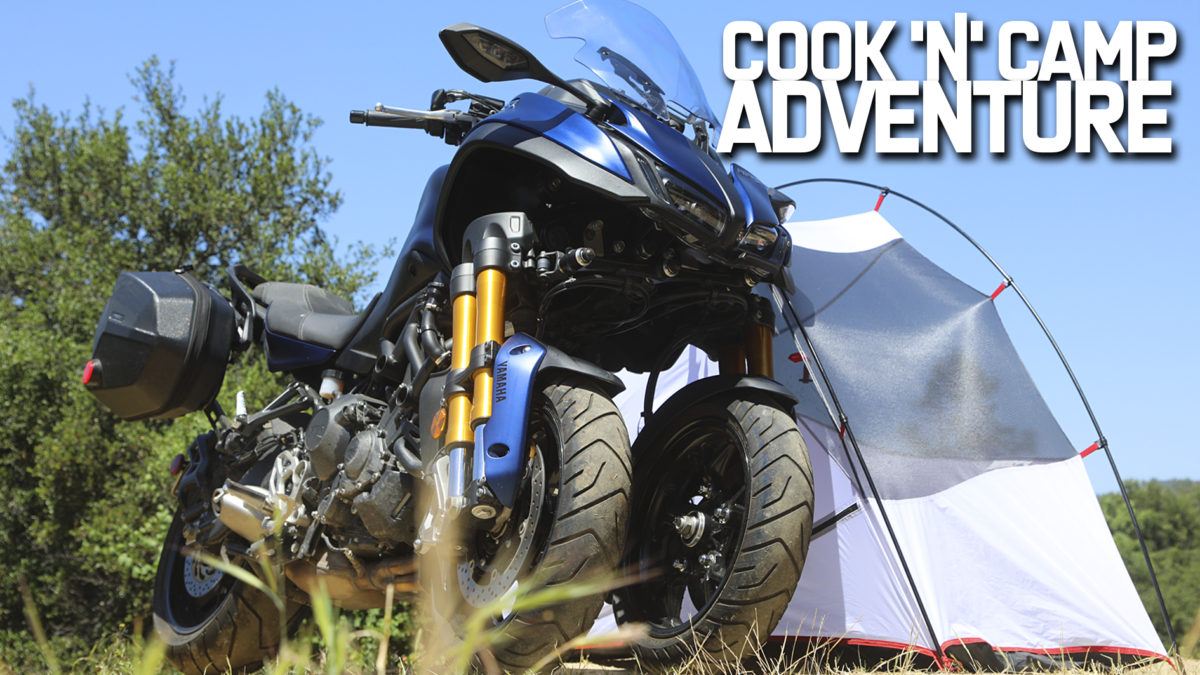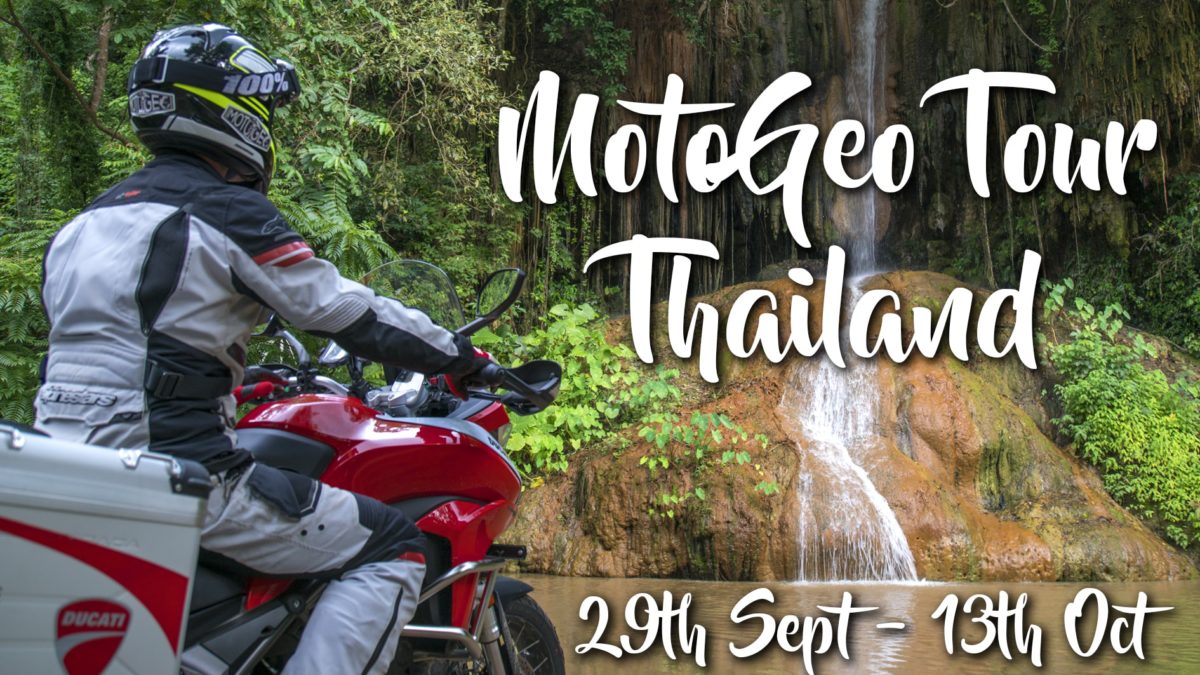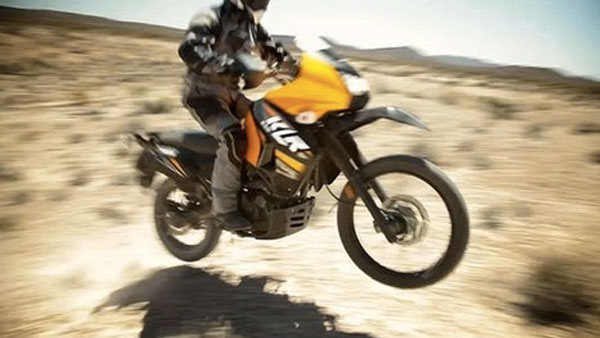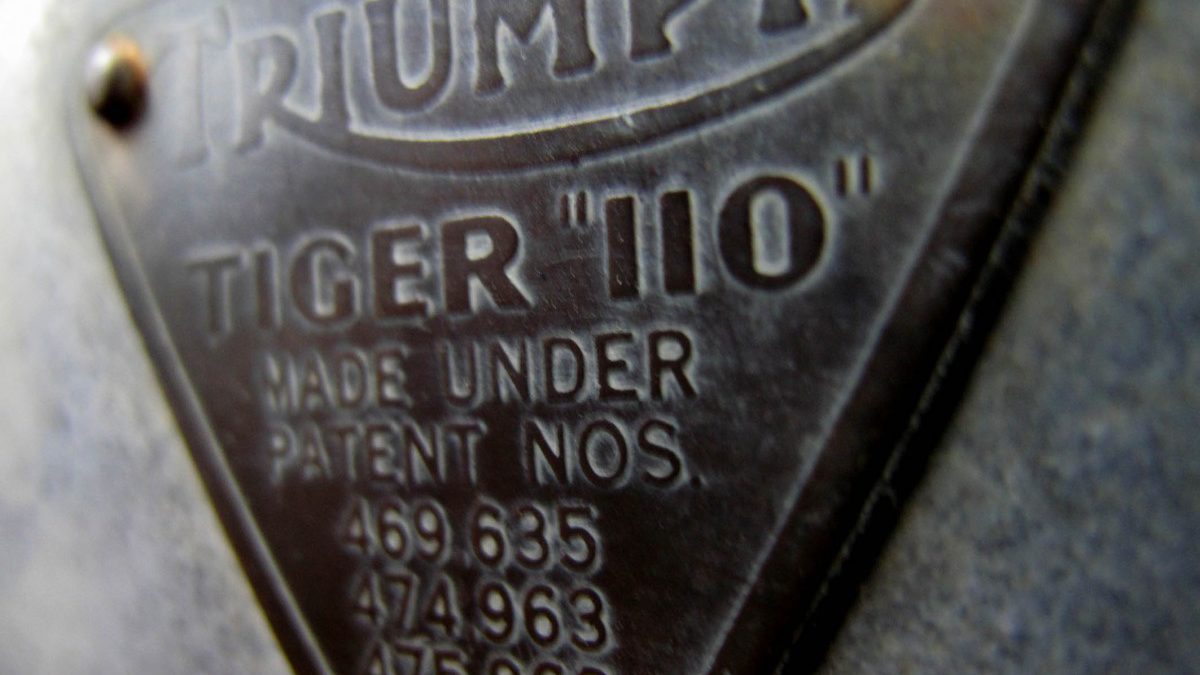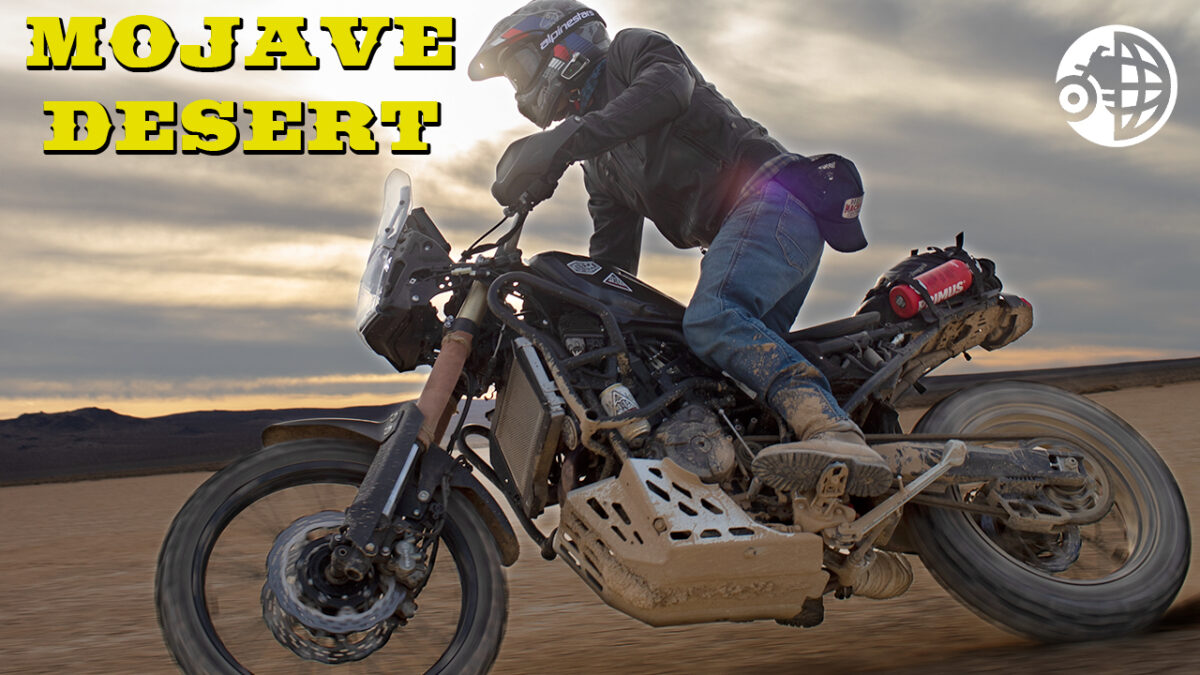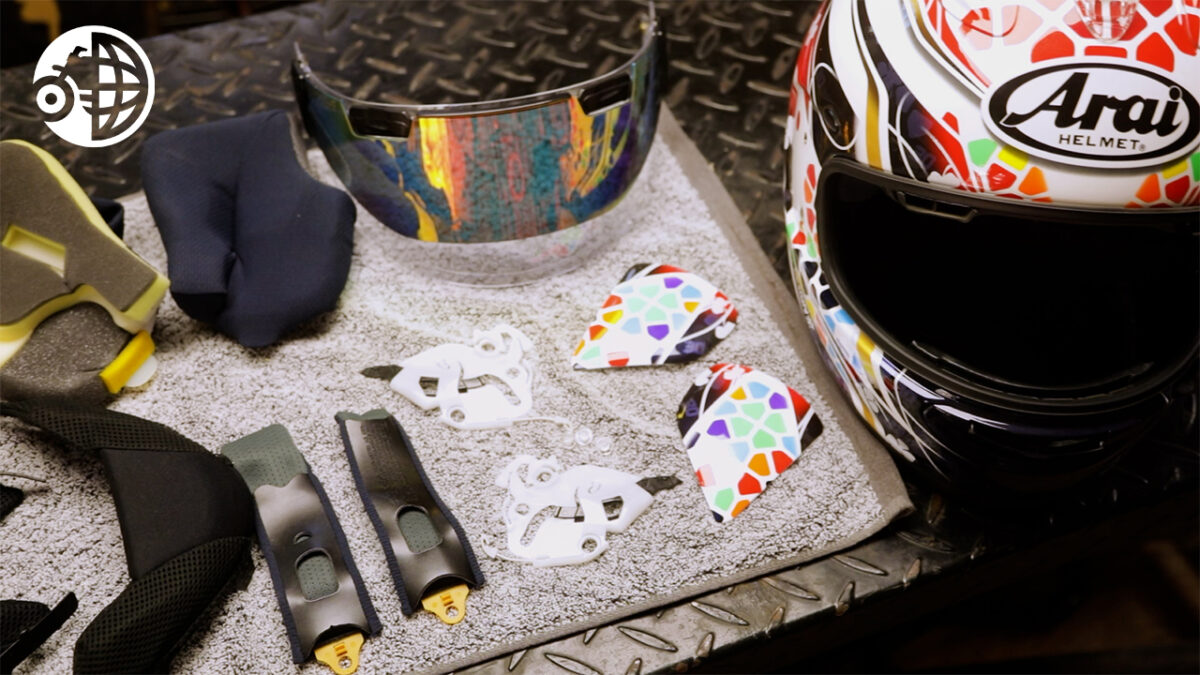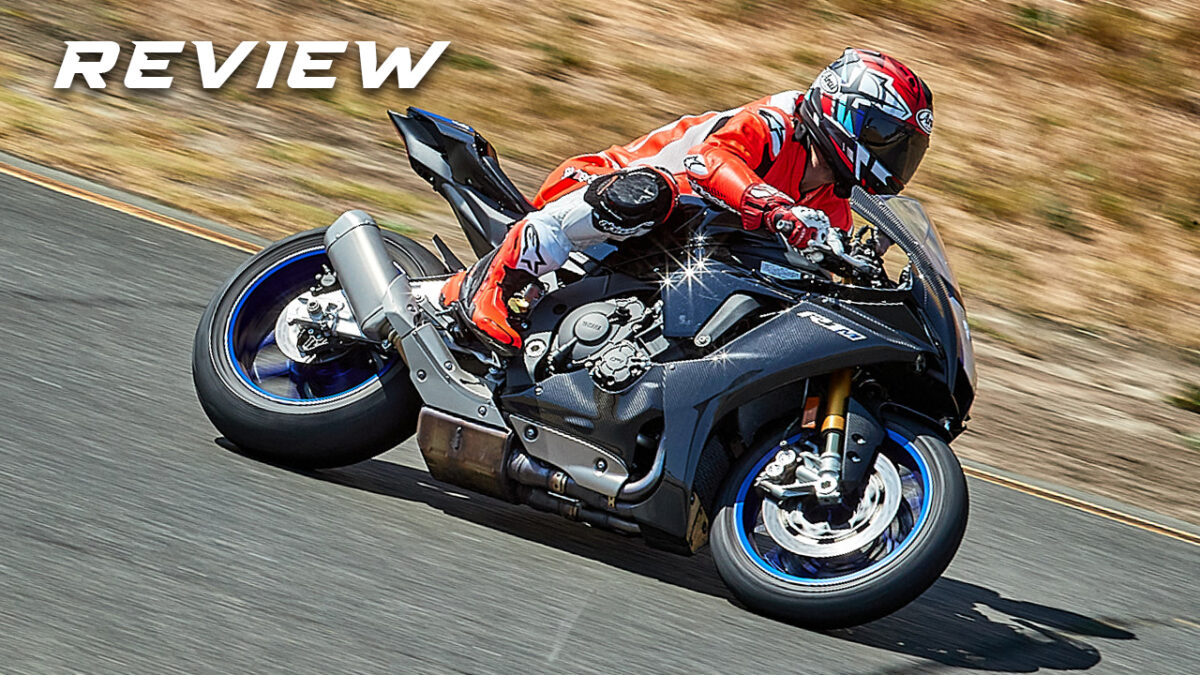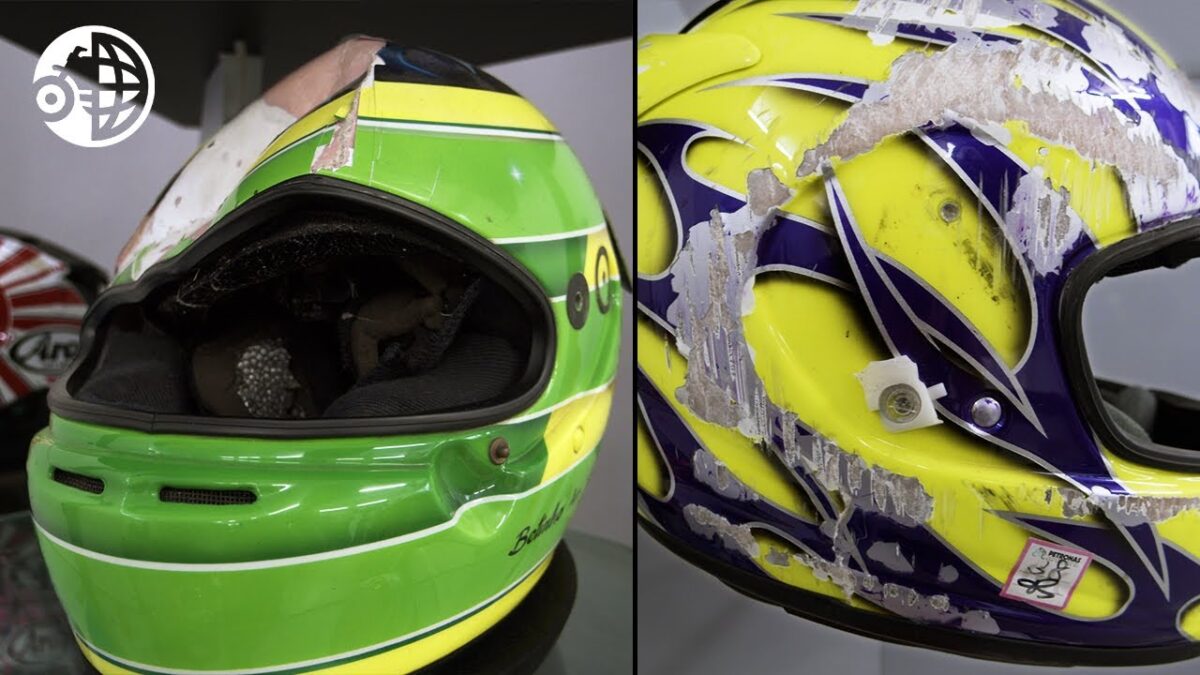Riding The 1913 Flying Merkel
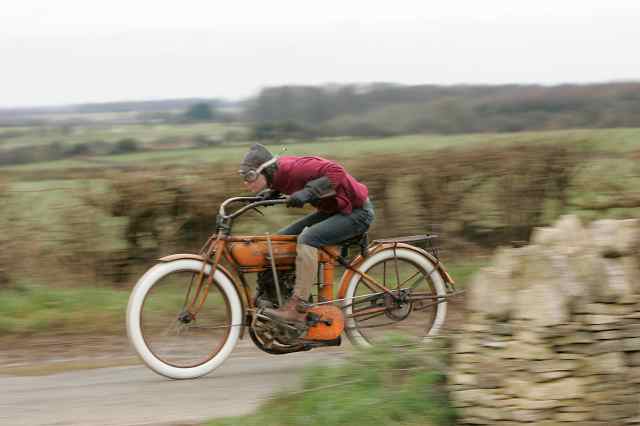
100 years ago motorcycles had barely been invented. The internal combustion engine was in its infant years and inquisitive men had suddenly realised that if you combine the idea of the bicycle and add an engine, you get something called […]
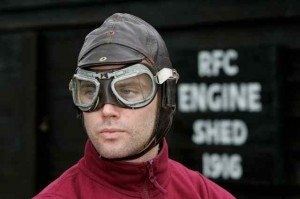 100 years ago motorcycles had barely been invented. The internal combustion engine was in its infant years and inquisitive men had suddenly realised that if you combine the idea of the bicycle and add an engine, you get something called a motorcycle.
100 years ago motorcycles had barely been invented. The internal combustion engine was in its infant years and inquisitive men had suddenly realised that if you combine the idea of the bicycle and add an engine, you get something called a motorcycle.
Throw into the already exciting mixing-bowl, a highly competitive spirit, genius inventors, distance, speed and fearless young-men and you’ve one hell of an electrifying combination.
So, when winning races and having the fastest motorcycle in the world came way before crash helmets, leathers and safety, I thought it would be a great idea to go back to where it all started, so I threw my leg over ‘The Flying Merkel’, the fastest motorcycle in the world in 1913.
I first bumped into the proud owner Vic Norman, during one of the most incredible and terrifying moments of my life. Vic piloted a 1940’s biplane which I was strapped to the wings of and unrelentingly performed ‘loop the loop’ and ‘dive bombs’, successfully making me leave a brown mark in my pants. He’s a true lover of anything with an engine and as if the wing walking wasn’t enough, Vic asked/dared me to ride his historic pride and joy and attempt to match the old world record of 80mph.
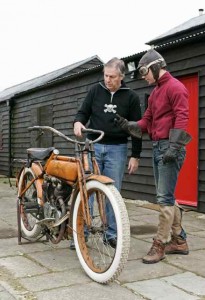 OK, well I am not one to wimp out on a dare and agreed immediately, then spent the next week trying to think of a good excuse to get out of it. I’d hardly slept the night before in anticipation of riding the machine and standing there red-eyed wearing chaps, huge gloves, a leather skull cap and goggles; I did wonder what the hell I was I letting myself in for.
OK, well I am not one to wimp out on a dare and agreed immediately, then spent the next week trying to think of a good excuse to get out of it. I’d hardly slept the night before in anticipation of riding the machine and standing there red-eyed wearing chaps, huge gloves, a leather skull cap and goggles; I did wonder what the hell I was I letting myself in for.
One week ago I’d been at the Pioneer Run watching mainly old men ride old bikes, carefully, thoughtfully and slowly. Now I was at the start of a 2 mile stretch of tarmac sat on a motorcycle worth over 100k with no front brake, one gear and oil was dripping out of the bottom of the engine onto the floor. Holly shit captain, whatever was I doing?
The first obstacle to get over was starting it so after pumping some oil into the engine and dribbling some fuel around the carburettor I was ready to fire this beauty into life. With the rear wheel off the ground and the bike in gear I started to peddle as fast as I could and once at a leg burning, goggle steaming pace, I dropped the valve-lifter and to my astonishment and delight the old girl started first time.
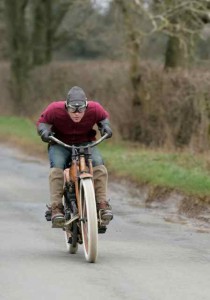 The next 30 seconds were almost too frantic to keep up with as it was taken off the stand and I peddled to get some momentum before engaging the gear. The 1st and only gear is extremely high and I struggled to keep the engine going as I kangaroo jumped and spluttered down the road pulling levers, twisting the throttle and not really knowing what I was doing.
The next 30 seconds were almost too frantic to keep up with as it was taken off the stand and I peddled to get some momentum before engaging the gear. The 1st and only gear is extremely high and I struggled to keep the engine going as I kangaroo jumped and spluttered down the road pulling levers, twisting the throttle and not really knowing what I was doing.
Thankfully the old girl didn’t stall and once out of the kangaroo phase the engine pulled strongly and seemed much happier gathering speed than it did pottering along. As my pre-war goggles cleared and the 1000cc engine picked up revs and it was too late to turn back now, and anyway, this was just getting interesting.
I must admit it had been slight, well OK, major panic setting off and judging from the coughing and spluttering I’d done for the first 200 yards probably didn’t look too stylish either. But now I was going and had 2 miles of open road ahead to enjoy before I needed to worry about a U-turn, so it was just a matter of getting to grips with it all and trying not to think about the leather crash helmet I was wearing.
With suspension front and rear, sprung seat, foot-boards and slim design it made you feel quite at home. In fact you could have been roaring down the road in your arm-chair with your feet up on the foot stool, but all that comfort was all short-lived as I reached the end of the road and I had to perform a tight U-turn.
A tip I’d been given by Harry Wiles, the president of the Vintage Motorcycle Club on the Pioneer Run was if I wanted to stop or slow down, think about it and start preparing yourself ¼ a mile before. Now I know that might sound a little extreme but by the time you have rolled the throttle, used your one and only brake, taken it out of gear, slowed enough to turn but not stop and positioned yourself for the manoeuvre, ¼ of a mile means you are leaving it bloody late.
For me, the first time doing anything is always the hardest. First kiss, first cough-your-guts-up ciggy, managing to get hammered without passing out and being sick all over yourself and U-turning ‘The Flying Merkel’ all rate up there on my tough to do list. Luckily I didn’t have too much time to think about it as the end of the road was upon me and I was forced into it whether I liked it or not.
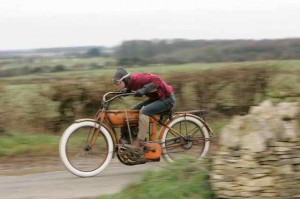 While going in a straight line the Merkel was faultless, fast, smooth, comfortable and enjoyable. Slowing down to a jogging pace, pulling levers, free-wheeling, keeping the engine going and trying to steer with extremely long handlebars wasn’t. I felt like I was riding a Supermarket trolley with a wonky wheel and a very expensive one at that.
While going in a straight line the Merkel was faultless, fast, smooth, comfortable and enjoyable. Slowing down to a jogging pace, pulling levers, free-wheeling, keeping the engine going and trying to steer with extremely long handlebars wasn’t. I felt like I was riding a Supermarket trolley with a wonky wheel and a very expensive one at that.
Once again any kind of style had gone out of the window as I threpney-bitted around the corner and boy was I relieved when I was finally facing the other way, without stalling, crashing or bending it. Another 200 yards of kangaroo jumps and splutters and I was off again, but this time I’d open her up to full throttle and really see what she was made of.
As the engine pulled the tall gear to a 40mph + tick-over, I started to gently open the throttle and listened carefully to the engine revs increase. Each and every step of the way the V-Twin responded well and invited me to give it more. More gas, more speed and more balls were needed as I put my faith in the 97 year old and like some kind of super granny on Red Bull, she never missed a beat and started to fly.
Head down, arse up and elbows in I hurtled down the road on this orange beauty as we progressively reached maximum revs and clocked my fastest speed of 76mph. The exposed valve springs and rocker arms merrily bounced up and down and the aging power plant seemed to love having its legs stretched, it was breath-taking.
This time I gave myself ½ a mile before the end of the road and gently coasted to a stop with a huge grin on my face and one or two flies in my teeth. Vic gave his baby a quick check over, added a bit more oil into the engine, fuel around the carb and that was it, I was off peddling like buggery again for my 2nd run.
I hoped I’d do a better job of setting off 2nd time around but once again I bounced down the road like a fat bird on a trampoline and the style-o-meter was firmly stuck at a sub-zero. The rest of my 2nd run was pretty much just like the first but with a little more finesse and a little less fear, The Flying Merkel was indeed everything it had been built up to be, it was a genuine flying machine and I love every second of being onboard.
One of the amazing features on ‘The Flying Merkel’ is its suspension. While bikes in the UK from the same era had a crude front fork and ridged rear end with seat springs at best, The Flying Merkel had a sprung fork and mono-shock suspension.
It’s incredible to believe that a bike built in 1913 could be fitted with such advanced technology, so advanced that the best motorcycle manufactures still used the front forks out of the Flying Merkel on their own machines well into the 1920’s.
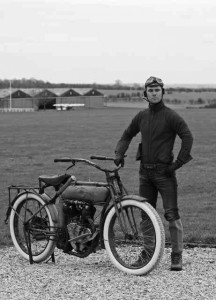 For me, the Mono-shock suspension is almost to good to be true, I mean twin rear shocks could still be found on the rotary Norton Superbike racer in the 1990’s and even some road bikes a few years ago, so how the hell did the guys at the Flying Merkel factory come up with that design?
For me, the Mono-shock suspension is almost to good to be true, I mean twin rear shocks could still be found on the rotary Norton Superbike racer in the 1990’s and even some road bikes a few years ago, so how the hell did the guys at the Flying Merkel factory come up with that design?
However they did it, this type of machine went on to win the biggest motorcycle events in South America. In 1914 Sr. Raoul Riganti on a single speed twin cylinder Flying Merkel covered a distance of 420 Km between Buenos Aires and Rosario, over roads stretching across the vast Argentine pampas in 7 hours 48 minutes, breaking the existing record by over an astonishing 2 hours.
In March 1915, Sr. Arnoldo Bernasconi on a single speed V-twin Flying Merkel won the Tourist Trophy race over the same course beating the best riders in South America and crossing the line before his nearest rival by 39 minutes.
Later the same year Maldwyn Jones and C. F. Pineau on a single cylinder Flying Merkel smashed the world record for 100 miles on a half-mile dirt track. It shattered all records along the way of 25, 50, 75 and finally 100 miles and covered the 200 laps in 1 hour, 54 minutes and 13.25 seconds, becoming the first motorcycle to cover the distance in less than 2 hours.
Some of you may think that vintage bikes look like basic old bicycles with basic old engines thrown in, but don’t be mistaken. These bikes were way ahead of their time, started what we know as the motorcycles today and some genius engineering brilliance can even be found on some modern bikes.
America may of lead the way in the early years but the UK soon caught up. Luckily the winding handle, fixed gear, direct-drive, rear-less suspension, gas lighting and metal to metal brake shoes have been surpassed by modern technology over the years.
Men raced these motorcycles on terribly rough dust tracks roads and thick wooden floored oval race tracks at mind-blowing speeds. These men were tough as old boots, hard as nails, fearless and heroes to many. And if you were lucky, you might just break-down or get a puncture and not join the increasing number of casualties who died from 1 ½ foot splinters after crashing on the wooden oval.
Pre First World War was an extremely exciting time to be involved with motorcycles. Lots of relatively small motorcycle factories across the globe, vying to become the best in the business and pushing technology along at an incredible rate. Imagine that today, a small factory in nowhere-ville designing, building and racing a motorcycle which could be the best in the world and all of the top riders wanting to race it… now that would be incredible, but I think it would take more than the fastest bike in the world to get Valentino Rossi to race flat-out in a leather cap.
THE END












